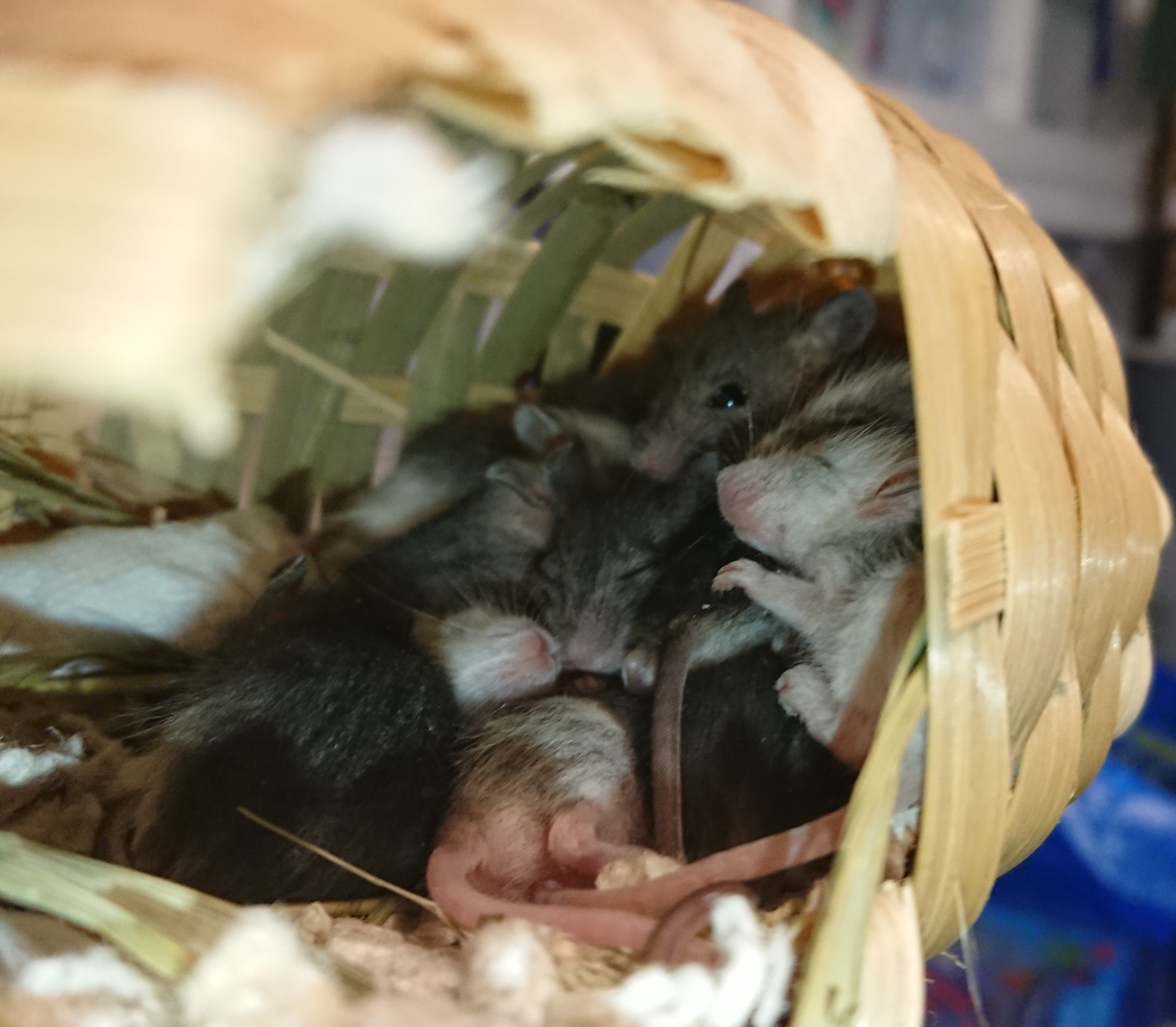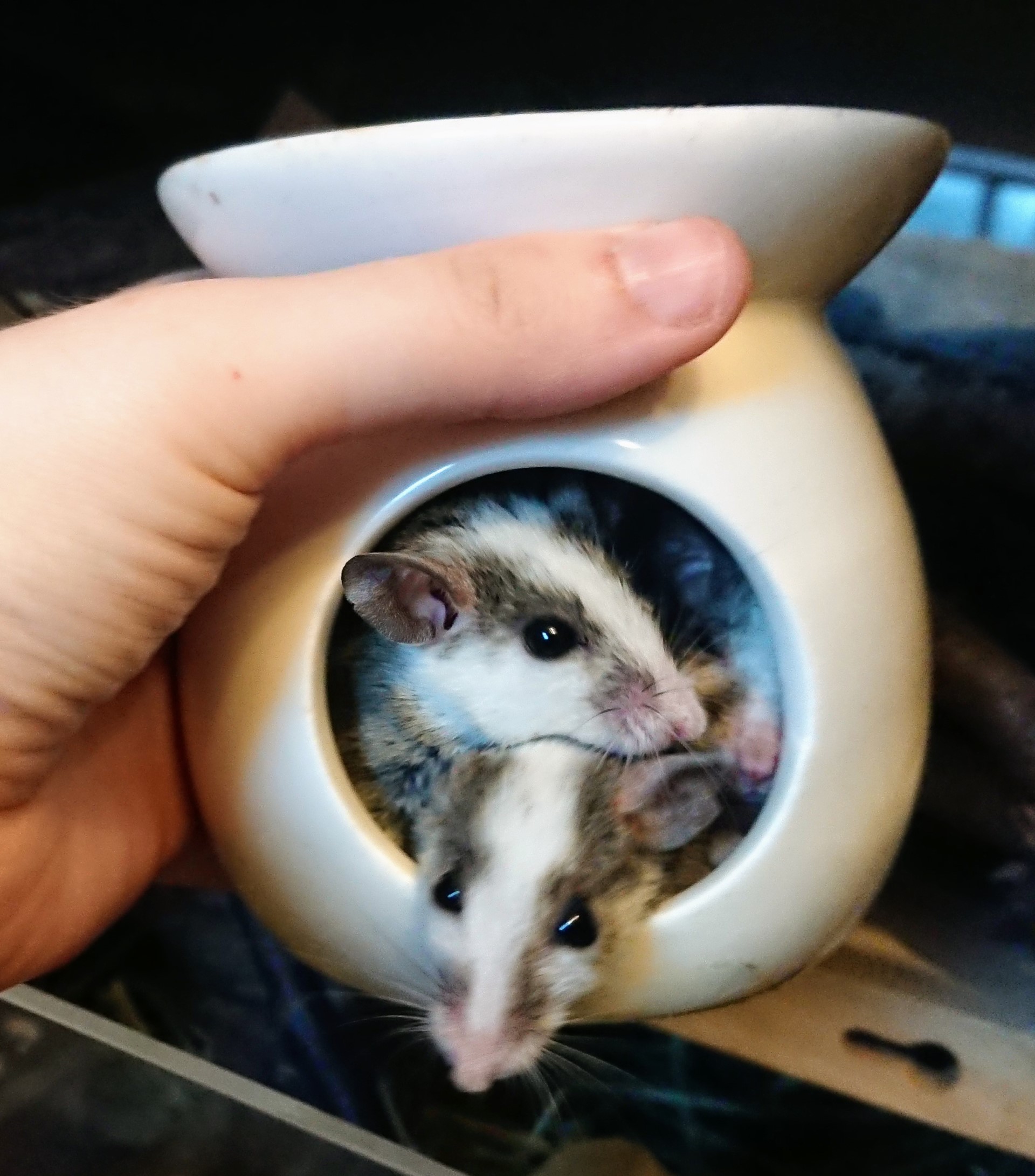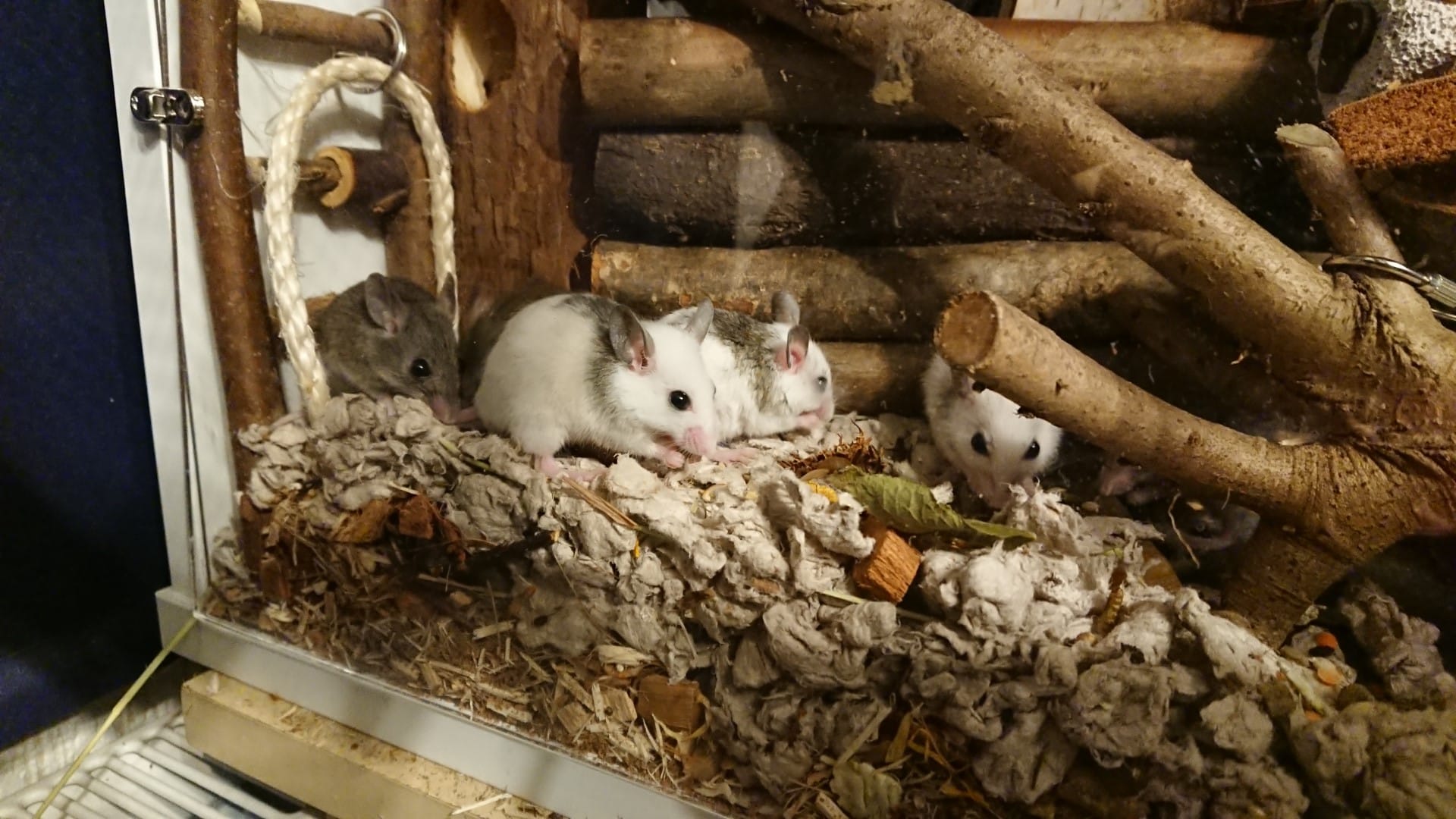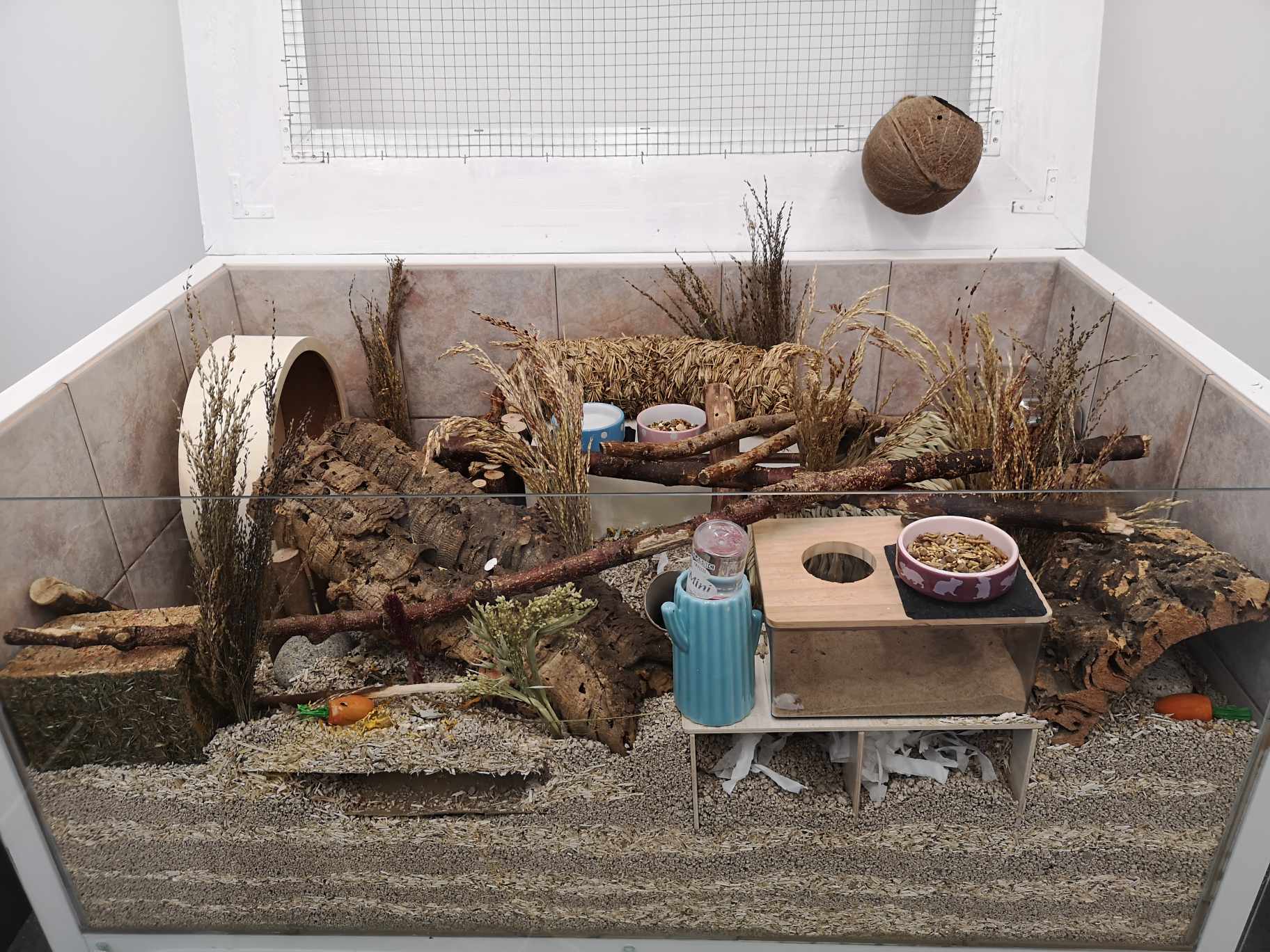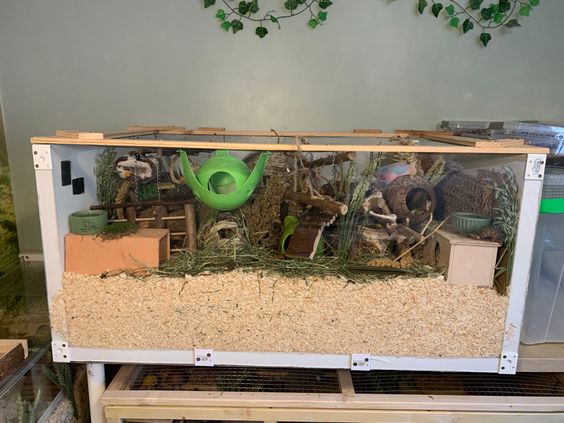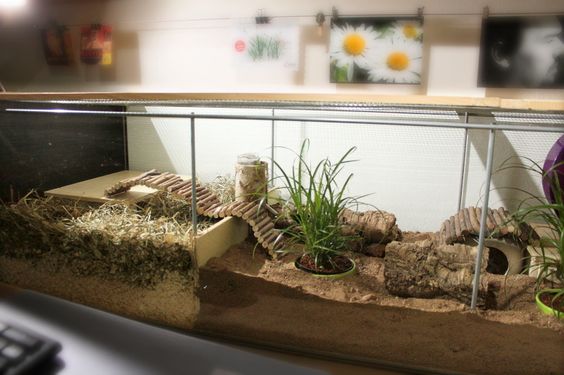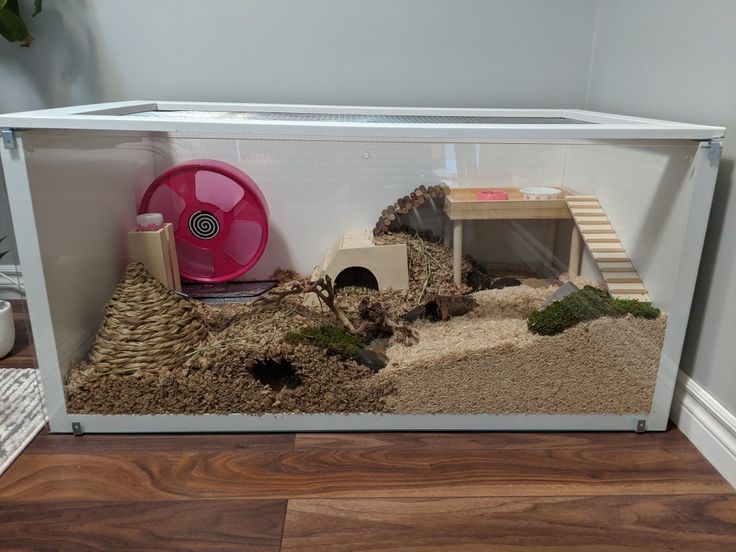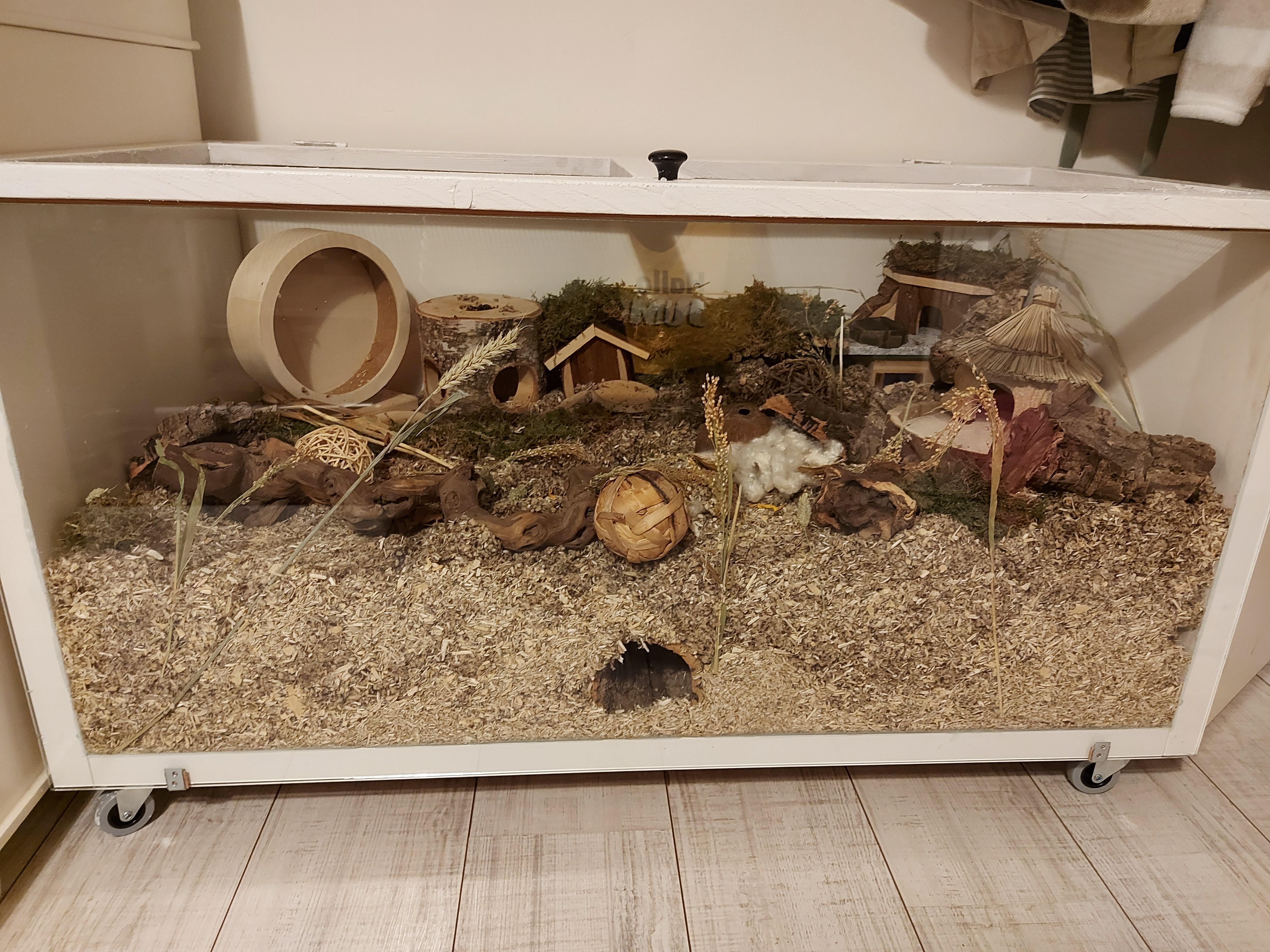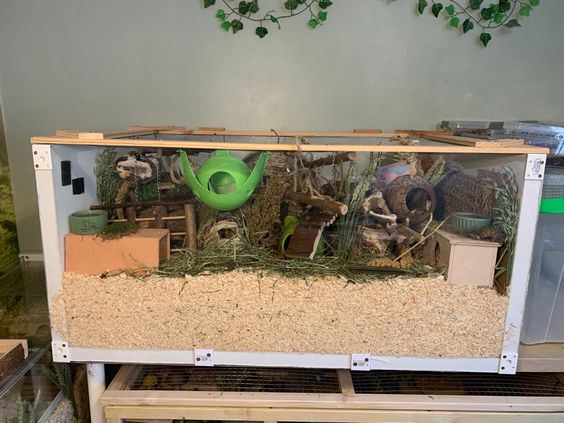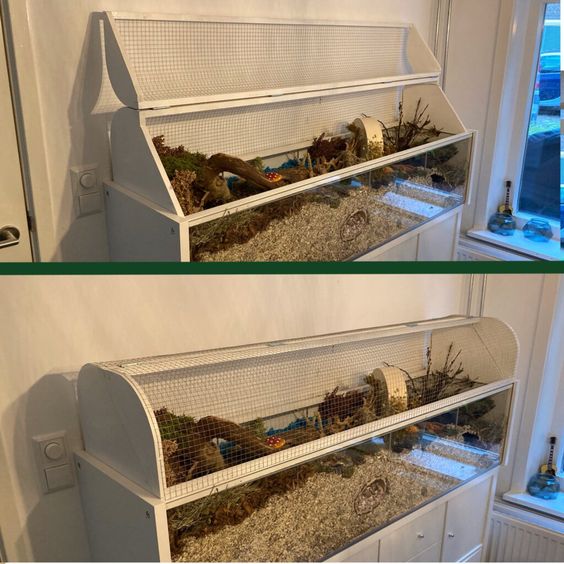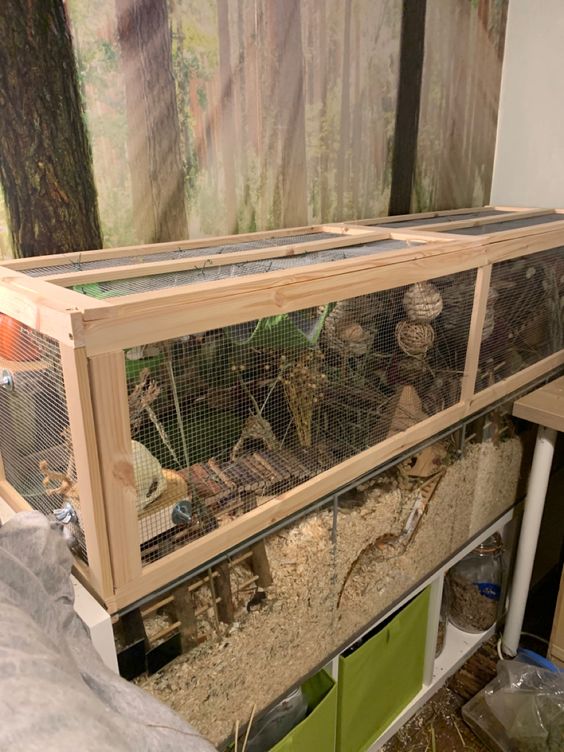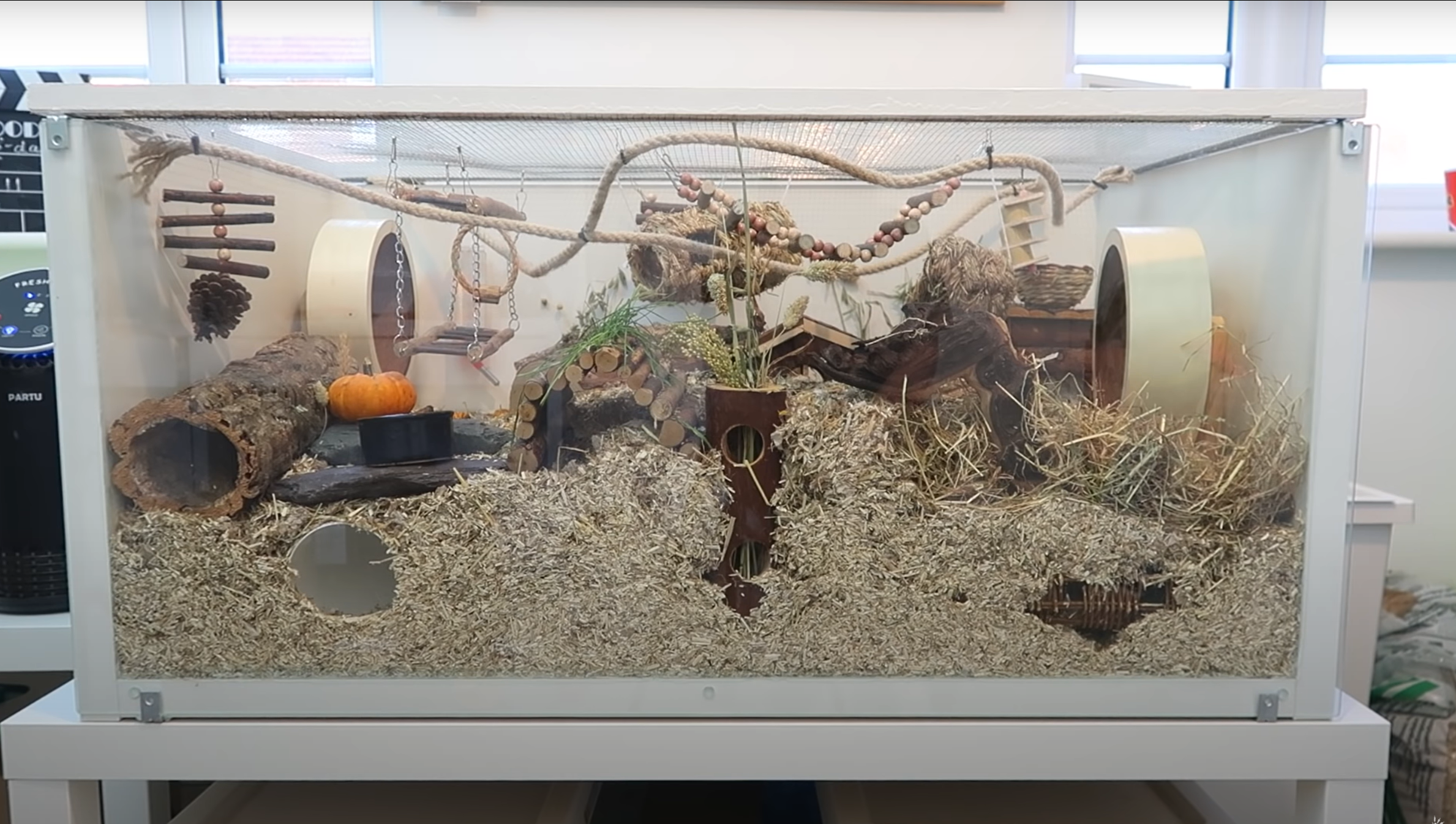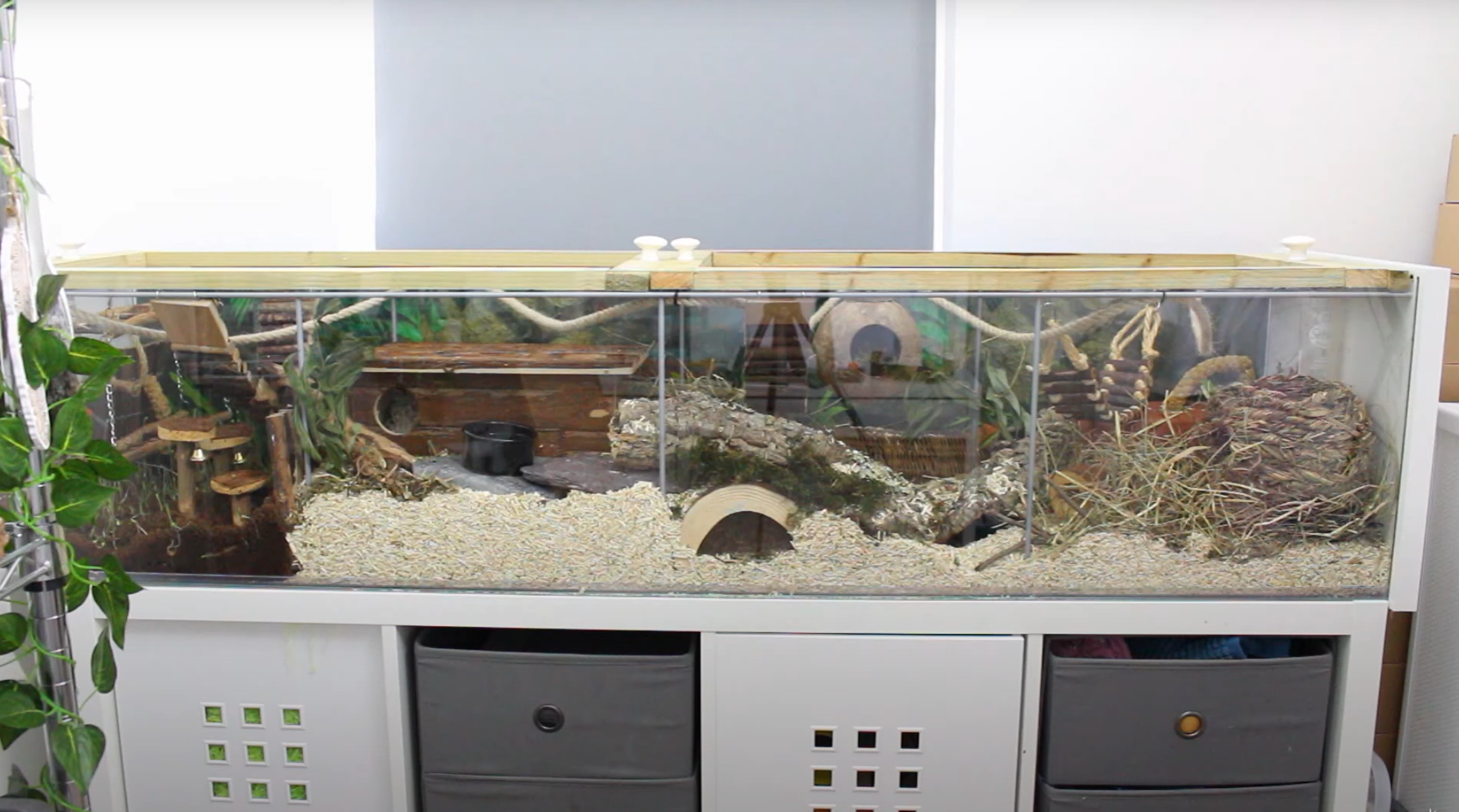Multimammate mice / African Soft-furred rats (ASFs) care
We still don't know a huge amount about keeping these guys as pets but this care sheet combines information found from different sources on the internet, as well as our fosterer's experience in keeping them.
ASFs are neither rats or mice but are instead a cousin somewhere in between. They are not fully domesticated (they are mostly kept as food for ball pythons) but can be tamed, although it is unlikely they will ever be cuddling pets.
They are otherwise very similar to rats and mice, smart, active and social but
more timid and nervous. They are active mostly in the evening and at night but are often awake
and about in the morning and through the day also. In general their care
information is very similar to mice.
Lifespan and size
They can live for 2-3 years and grow to be about 8cm (only a bit bigger than large fancy mice). Males are generally bigger than females until they have had babies, mums can then be up to twice as large as males.
Social
ASFs are highly social animals that naturally live as large mixed-sex colonies.
Because of this they need to be kept in groups, minimum of 4. They are so highly social that even a pair isn't really enough. They tend to sleep in a pile so at least one hide/bed should be big enough for the whole group.
Even boys live as part of the colony and are reasonably happy as a same-sex group, but we do advise neutering. If males are showing aggression to each other (without the presence of females) they should either be housed with female fancy mice (they cannot crossbreed) or else neutered and reintroduced. Mixed sex groups are natural and work well with neutered boys. Boys are much less likely to be aggressive to each other than fancy mice, but neutering seems to be favoured amongst pet keepers as it almost guarantees the group will remain harmonious and baby-free.
As previously mentioned ASFs can cohabit with fancy mice which is a rare example of being able to safely keep different species together. It is not recommended that you keep males of both species as male fancy mice are quite territorial but any other combination works. Keeping female ASFs as companions for a single male fancy mouse is becoming more popular. It is worth noting that both species appear to prefer the company of their own species but accept each other as a better alternative to being alone.
It is possible to introduce youngsters and young adults to each other fairly easily using the same neutral-ground method as you would for fancy mice. This is possible with adults but caution should be used as they are more likely to be aggressive.
They are quite vocal and squeak at each other quite a lot! This seems to mostly be while in their underground tunnels and when playing.
Housing and enrichment
As always, bigger is better!
The minimum cage size is 100cm x 50cm x 50cm for 4-6 adults however this is the very minimum size and we would definitely recommend getting larger than this. Any bars needing to be mouse spacing (1cm or less).
ASFs can be chewers, so cages with plastic or wooden parts should be used with caution and inspected for damage and potential escape holes regularly. Barred floors should be avoided or covered. Tank style enclosures are ideal. Ideas on cages at the bottom of this care sheet.
Length and deep substrate are more important than a lot of height. They enjoy digging and floorspace more than climbing but they do enjoy branches and lots of clutter like tunnels, hides, cork bark etc.
Like all rodents they enjoy digging and will take great pleasure in rearranging their cage to suit them! Provide a minimum depth of 20cm for an area at least 50x50cm or as much of the cage as possible. Ensure the substrate is something that will hold tunnels and chambers and provide a mixture of substrates and bedding materials in different areas for stimulation. Hemp/ megazorb/ aspen/ paper/ cardboard/ soft hay/ coconut chip and more all make good options. Avoid pine, sawdust, anything scented and fluffy bedding. (Same advice for all rodents).
A sand bath is not needed however they do enjoy it and providing hamster safe sand is another possible source of enrichment, some seem to prefer the sandpit as a toileting area.
A wheel should be provided, more than one for larger groups, with the minimum size 28cm, it should be solid not barred and be long tail safe (back mounted not A-frame).
Multiple levels created with shelves are a great way to add useable areas. They do climb and are agile enough to use ladders, branches and ropes to move between levels but they are more clumsy than rats and mice so care should be taken to ensure no long drops are possible.
Diet
ASFs can eat most of the same foods as fancy mice, we recommend a good bought seed mix (like the getzoo coloured mice mix - https://www.getzoo.de/en/getzoo-colour-mouse-food-500g). If they don't eat enough protein they are likely to start chewing the ears and tails of their cage mates (and oddly they will let them!) so making sure you add in treats like mealworms, small amounts of scrambled egg once a week, freeze dried chicken treats (made for cats) and dried grasshoppers/crickets.
Scatter feeding is also a great way to reduce destruction by keeping them busy and can help keep a group living harmoniously as it prevents resource guarding and helps ensure they eat a full mix of food instead of picking at favourite bits. Around 10g of food should be provided per ASF at least once a day.
Fruit should be given sparingly and fresh vegetables in moderation. Leafy greens is better for them and herbs like coriander and pea shoots. Always remove uneaten food before it can go bad.
They drink quite a lot of water and in general seem to prefer a bowl over a bottle, although both should be used. For larger groups we recommend more sources of water (i.e. a group of six we recommend 2 water bowls and one water bottle).
Taming and handling
As ASFs aren't fully domesticated, it can be really hit and miss with what their temperament is like. Some may never tame at all while others may become as tame as fancy mice.
Provided with a safe environment without too much disruption they mostly turn quite bold within their cage. However they may still turn timid when you invade their space and they are likely to panic if removed to somewhere else.
They are incredible jumpers and lightning fast! When attempting to pick them up they are likely to jump away or out of your hands. Coaxing them into a tunnel then covering the ends is a safer way of moving them.
Any free roaming run should have high unclimbable sides and have enrichment with familiar smells. A large lidded plastic storage box with ventilation panels high on the sides is a great alternative to a pet carrier as somewhere to move them to when cleaning their cage.
As they are smart it shouldn't take long for them to associate their primary care giver with food and hand feeding treats should be achievable. Some ASFs will start nibbling fingers if hand fed too much, if this happens stop offering them treats from your fingers for a while until the behaviour stops. Then try offering them treats on fingers held flat, you may be able to slowly move this onto your palm until then will sit on your hand while in their enclosure.
Once tame enough to take treats most ASFs will allow stroking their backs as long as you don't attempt to pick them up. Some will be ok with being picked up briefly to move them to a different area of their cage (or back into the cage if they are climbing out of the opening to get to you!). Take things slowly and with certain animals they may come to trust you and be confident enough to get out of their enclosure for handling but this should be done with caution and in a secure safe area.
An ASF is unlikely to bite you if you are respectful of what it wants and spend the time socialising and taming them, however it should be acknowledged that most ASFs will at least nip if picked up without proper taming or if pinned down. They are not actively aggressive and aren't known to attack hands in their cage without provocation.
Useful links
*As stated above ASFs can be chewers so cages with plastic or wooden parts should be used with caution and inspected for damage and potential escape holes regularly. Barred floors should be avoided or covered. Tank style enclosures are ideal.
Care sheet created on the 14/08/23 - More links may be added over time.
Glass cages:
Jungle pet - comes in different sizes, we recommend the last 4 options that come up, as these reach and exceed our minimum size recommendations - https://www.junglepets.co.uk/design-3-tank-with-lid-and-2-corner-shelves-and-platform-accross-entire...
Diversa tank (DIY lid needed) - https://mbstore.uk/product/diversa-guardian-glass-aquarium-fish-tank-300-litre/?gad=1&gclid=CjwK...
DIY cages:
IKEA Detolf - https://www.ikea.com/gb/en/p/detolf-glass-door-cabinet-white-80269122/
As this is technically a glass cabinet, a little DIY is needed, there are lots of ideas and how-to videos on how to transform this into a mouse (most are for hamsters but apply for ASFs as well) enclosure so please check out a few links below as well as looking on Google, Pinterest and Youtube. UPDATE: Currently out of stock online and in stores as very popular, but we have been told that they will be back in stock in September.
https://www.youtube.com/watch?app=desktop&v=AlwTQYv9sHQ
IKEA Linnmon:
Linnmon cage tutorial - https://www.youtube.com/watch?v=Ocdcl-82ybE
Linnmon cage lid tutorial - https://www.youtube.com/watch?v=kvQPTvrqOwE&t=151s
Linnmon x3 needed - https://www.ikea.com/gb/en/p/linnmon-table-top-white-00251135/
Hemnes glass - https://www.ikea.com/gb/en/p/hemnes-glass-top-transparent-60430021/
*Plastic cages:
Slavic plaza (wire sides will need to be replaces with screens):
https://www.petsathome.com/shop/en/pets/savic-plaza-hamster-and-rat-cage?fbclid=IwAR2v5kNZAnX0-zx6F5...
Slavic plaza replacement screen sides - https://www.vikinglaser.co.uk/product/savic-plaza-complete-cage-screens/
